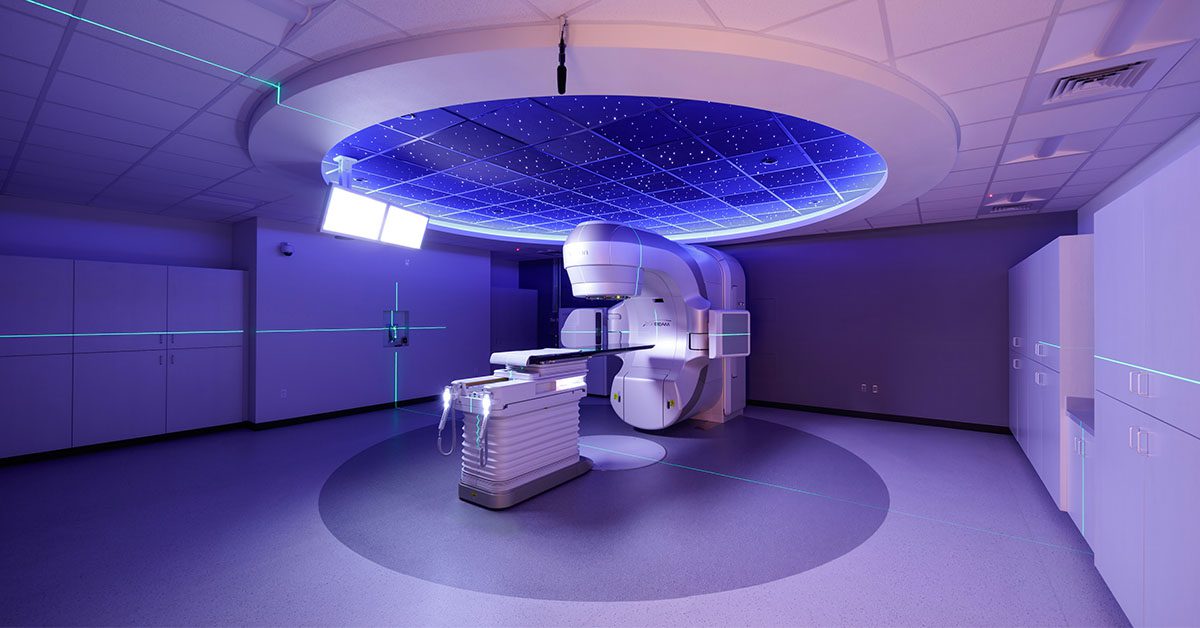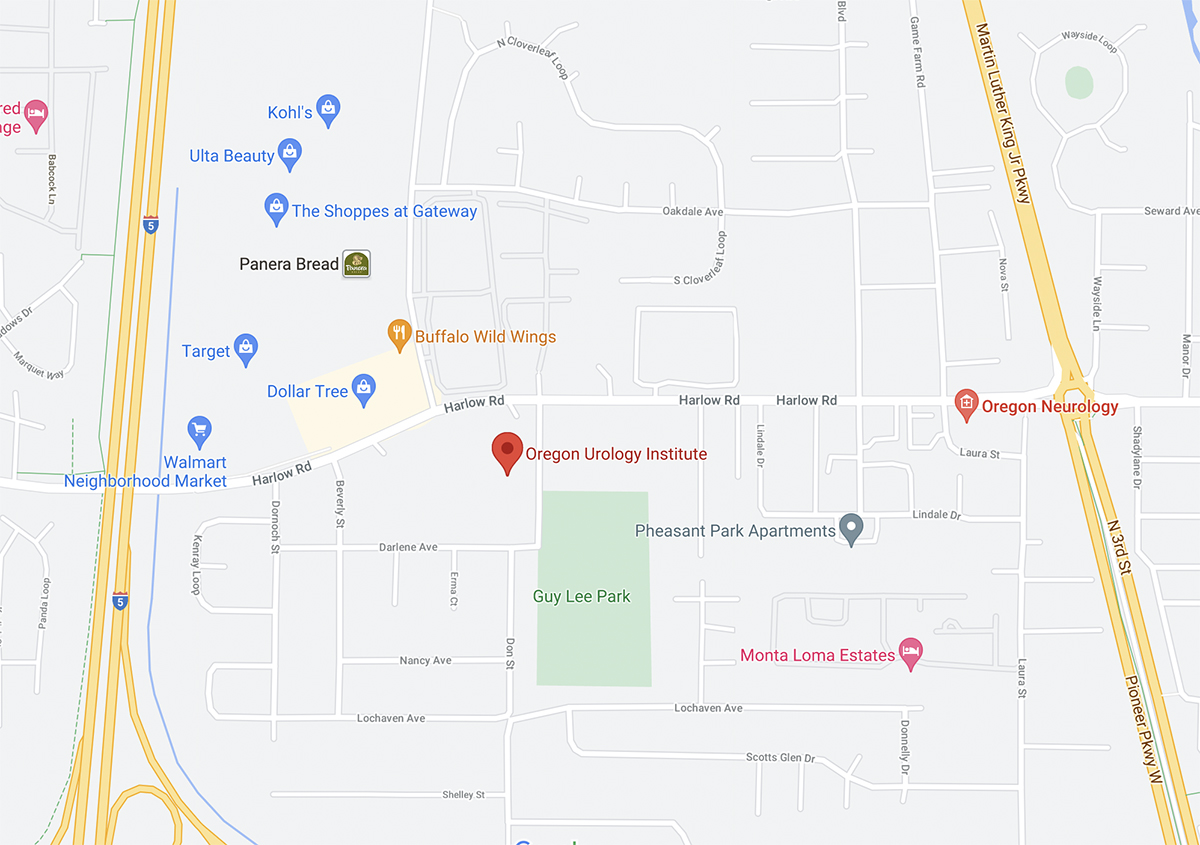
IMAGE-GUIDED
RADIATION THERAPY
Image-guided radiation therapy (IGRT) is a type of external beam radiation that is very precise. It allows your doctor to focus radiation where it needs to go without hurting healthy tissues around the cancer. In this way, it is able to reduce side effects.
HOW IT WORKS
Tumors move, and if radiation beams aren’t on-target, they can be less effective and harm healthy tissue. IGRT combines imaging and treatment in a single machine. This allows your doctor to track the tumors as they move so he can make tiny adjustments to where the radiation should be focused.
This accuracy allows your doctor to use higher doses of radiation to control or kill the cancer, without causing unnecessary side effects. With IGRT, the full dose of radiation is typically delivered over multiple sessions. You can usually return home right after your treatment.
SIDE EFFECTS
Generally, patients experience few or no side effects from radiation therapy. Fatigue is the most common side effect reported, and it is usually not severe. Most patients can often continue most of their normal daily activities with a reduced schedule and many continue to work during radiation therapy.
If you experience side effects, they usually begin around the second or third week of treatment, and may last for several weeks after your last treatment. Rarely, serious side effects can develop after radiation therapy is finished. Talk with your radiation oncology team about any side effects you’re having so they can help you manage them.
HYPOFRACTIONATION
Recently there has been significant information in the local media about Radiation Oncology treatments for prostate cancer that last significantly less than the Oregon Urology Institute standard treatment of 45 days. This shorter treatment is called Hypofractionation and has emerged over the last few years. The theory of Hypofractionation is that fewer treatments at a higher dose per treatment may improve patient outcomes, reduce overall treatment costs and be more convenient for the patient.
All of that seems well and good, however, the problem is that current data cannot confirm improved patient outcomes. Multiple findings show that incidence of GI (stomach and intestines) and GU (urinary system) complications were higher with Hypofractionation.

The Oregon Urology Institute has the ability to provide Hypofractionation but has elected to not pursue it at this time because studies have not been positive in their results. Though we very much would like to lower the cost and improve the convenience of this treatment, we will not adjust our treatment protocols until we are 100% certain of the safety of the change.
We will continue to monitor the data and encourage you to have a conversation with your Urologist and Radiation Oncologist about this very important topic.
XOFIGO®
SYSTEMIC RADIATION
Xofigo® is a new type of injected radiation used to treat prostate cancer that has spread to the bone. Although the radiation passes through your entire body, it only attacks cancer cells in your bone. Because of this, it has low side effects.
HOW IT WORKS
Xofigo® is made of a radioactive substance called radium 223. It moves throughout your body and “hones in” on tumors in your bone to directly deliver radiation where it needs to go. The injection causes minimal damage to healthy tissue around the tumors and therefore side effects are minimal.
Xofigo® is injected intravenously every four weeks for six months. The process only takes about one minute.
WHAT TO EXPECT
Xofigo® is currently used only to treat metastatic castration-resistant prostate cancer (mCRPC) that has spread to your bone. It may be used alone or with other treatments, including hormone therapy.
SIDE EFFECTS
Generally, Xofigo® has few side effects. The most common are nausea, diarrhea, vomiting, swelling of the arms and legs (edema) and low blood cell counts.
Many patients can often continue most of their normal daily activities with a reduced schedule, including working full time during their radiation therapy.
Because Xofigo® injections contain a radioactive substance, there are some precautions you must take while receiving treatment to prevent exposing others. Good hygiene practices reduce others’ exposure to any bodily fluids, and you must use a condom during intercourse to prevent exposing your partner. There are no restrictions on causal contact with other people.
Talk with your radiation oncology team about any side effects you have while on Xofigo®. They can give you information about how to manage them and may prescribe medicines that can help provide relief.






